 Be Inspired Blog - Arizona
Be Inspired Blog - Arizona
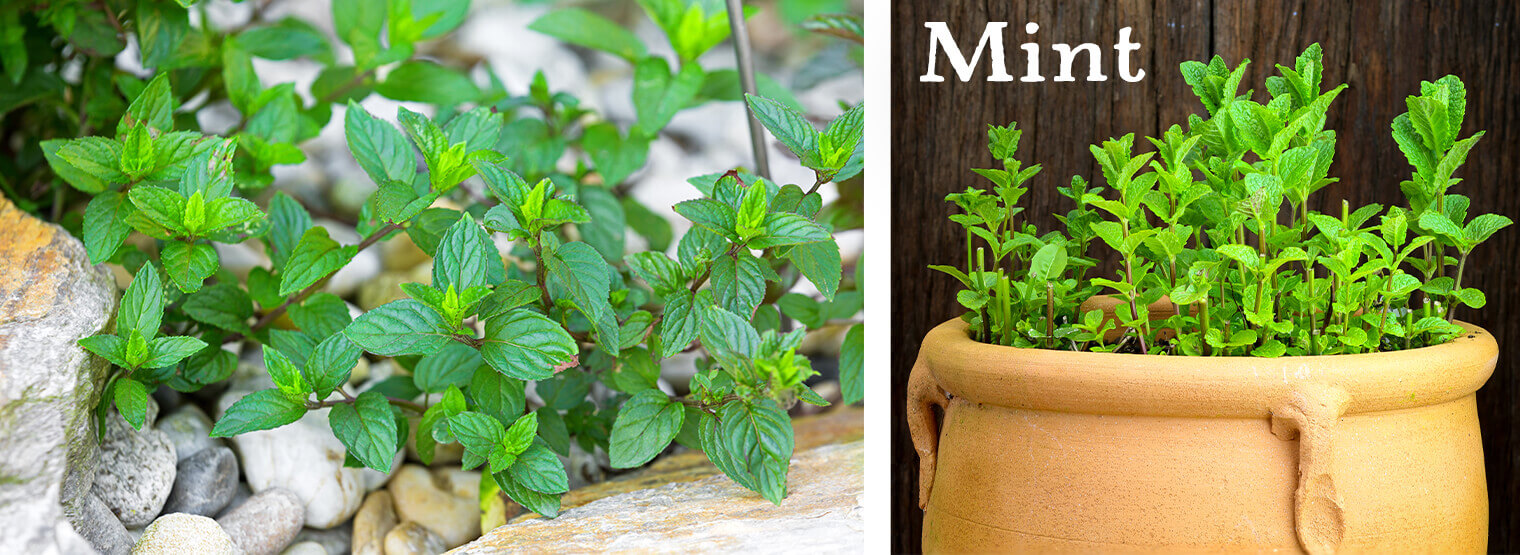
This Herb And Your Garden Are ‘Mint’ To Be
Bright green and leafy, mint is one of our favorite herbs to fill a planter with and have on hand all summer long. Fantastic in drinks, marinades, salads and more, this easy-to-grow perennial comes in nearly 600 varieties and loves the heat – as long as you can keep it well watered.
Growing Mint: Seeds or Starts?
While mint certainly can be started from seed, getting it to germinate and sprout can be a tricky process. We recommend that casual home gardeners simply buy a seedling, or take a cutting from an already established plant.
To plant a cutting, place the stem in a glass of water until it sprouts roots, and then plant as you would a seedling. You may even be able to do this with fresh mint that you purchase at the grocery store.
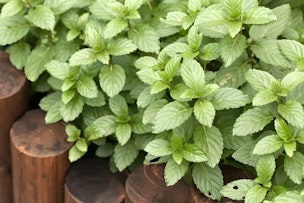
Plan the Area You’ll Be Growing Mint In
When choosing a location for your mint plants, you’ll want to plan for some kind of barrier to keep your herbs contained. Mint will spread uncontrollably if you don’t set firm barriers, ultimately choking its neighbors.
Since your mint plants may also have to be shielded during the hottest part of the day, we recommend growing them in a container that can be easily moved around from spot to spot in the yard. This keeps it from dominating your yard, and allows it to be relocated as needed.
If you want to grow mint outside a container, we recommend a solid barrier, like a walkway or garden bed. Since mint spreads by roots and underground runners, a piece of garden trim sunk at least a foot into the soil surround the plants can help keep it confined.
Mint grows best in full sun, but will benefit from partial shade during the hottest part of the day. Make sure you water frequently, allowing the top of the soil to become dry to the touch before you water each time. Also be sure to water close to the roots to avoid sunburn on the plant’s leaves.
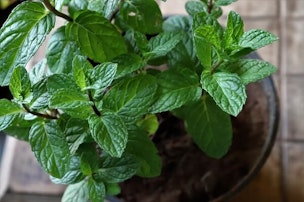
Growing Mint in a Container
The aggressive nature of mint makes it an ideal herb to be planted in its own container, but will require thinning and dividing every other year or so.
A 12-inch pot is the perfect size for a single plant. Keep it well taken care of and you’ll be surprised at how quickly it grows to fill the pot. Plucking leaves from the top, especially, will encourage the plant to grow out instead of up, giving you a larger harvest.
Once every two or three years, divide the plant and transplant or discard the extras. Failing to do this will cause the plant to become rootbound, which will stunt its growth or even lead to the plant’s demise.
If you have your mint container growing near the rest of your garden, be cautions of stray stems that may grow over the edge of the plant and towards the ground. A healthy stem will easily take root and you will quickly begin to find mint in with your other plants.
Potted mint can be grown indoors as well, but you’ll find it quickly becomes too large for the average window sill.
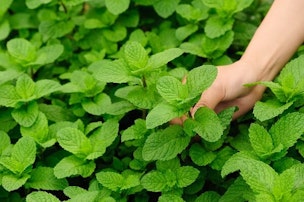
Growing Mint as a Natural Pest Repellent
Because of the strong smell, mint is frequently left alone by insets and other pests. In fact, growing it in a (carefully contained) barrier around other plants and vegetables can help keep insects away without adding extra pesticides to your garden.
Aphids, spider mites and whiteflies are all small insects that sometimes trouble mint, but a strong stream of plain water can wash them off every few days, or you can use an insecticidal soap spray if extra help is needed.
Harvesting and Storing Your Mint
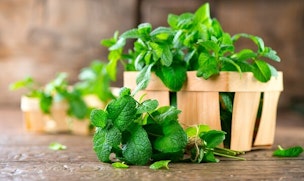
Harvesting mint is as simple as picking off a few fresh leaves when you need them. Never take more than one-third of the leaves on the plant at a time, and allow it some time to recover and regrow before harvesting more. If you need more mint, consider harvesting leaves from multiple plants instead of stripping one bare.
If you find that your plants are overproducing the amount of mint that you need, don’t be afraid to trim them back. Overgrown mint plants will produce leaves with inferior flavor.
Make sure you finish harvesting mint before temperatures drop. A cold snap will kill the aboveground part of your mint, but the roots will sprout again in the spring as long as there is enough plant material left to cover the roots for winter protection. You can also add a layer of mulch for additional protection from the cold.
Fresh mint leaves can be kept in the fridge for 3-5 days before they start to wilt. Longer storage requires dehydration, which can be done with a food dryer, an oven set on low, or even hanging bundles in a warm well-ventilated room. Store dry mint in an air-tight container for up to a year.
Growing Mint Varieties
As mentioned earlier, there are over 600 varieties of mint. Each has its own flavor or scent, though some may be similar. Be sure the type you choose is not only best suited to your growing region, but also its intended purpose. Some are perfect for culinary uses while others are medicinal or simply aesthetically pleasing. Let’s take a look at ten of the most common mint varieties.
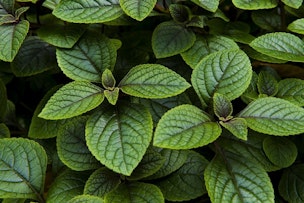
Peppermint
Not as invasive as some of its relatives, peppermint still has a tendency to spread and is best suited to a container. If planted in the ground, these plants should be relocated every three or four years to prevent them from becoming spindly.
Peppermint is good for indigestion and bloating by helping relax the muscles that keep gases trapped in the stomach and intestines. It also contains menthol which acts as a natural decongestant by thinning mucus, loosening phlegm, reducing coughing and soothing sore throats.
Spearmint
Spearmint grows best in partial shade with well-draining, rich, moist soil. Spearmint, once planted, will grow and spread quickly if not contained. If you plant it in the ground, bury a 5-gallon bucket with the bottom cut out to surround the plants and prevent runners from spreading.
Spearmint is the mint variety most commonly used in culinary applications.
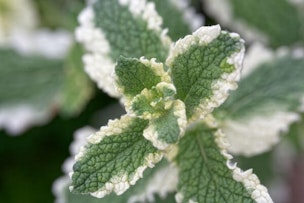
Pineapple Mint
Pineapple mint is a very visually appealing variety which spreads quickly, making it ideal for covering large areas. The leaves are commonly used in beverages, potpourris and as an attractive garnish. It also has a strong pineapple scent.
Pineapple mint appreciates full sun or partial shade, and will grow tall or spread wide depending on how much sun it receives. You can also pinch off the tops of plant to keep them short and bushy if you prefer. Once the plants are established, water is only necessary during dry spells or periods of extended high heat.
Apple Mint (Woolly Mint)
Also known as “woolly” or “fuzzy” mint, this variety can be highly invasive and quickly take over large areas if not contained. It prefers full to partial shade, and requires regular watering until the plants are established. After that, provide extra water only during times of drought or extended high temperatures.
Apple mint thrives on being cut back, which should be done once or twice each season. Before winter, mow or cut everything to the ground and cover with a 2-inch layer of mulch.
Pennyroyal
Both European and American pennyroyal have a fresh, minty smell, but only European pennyroyal is actually in the mint family. The stems will grow to about a foot tall and add beautiful reddish purple and lilac colors to your garden when it blooms.
The stems will put down new roots wherever they come into contact with the ground, so encouraging a shorter, bushy growth by trimming the tops is encouraged if you plan to grow pennyroyal in the ground. As a container plant, pennyroyal is a beautiful trailing addition to any hanging pot.
Pennyroyal thrives even in harsh conditions, and is popular for ground cover or erosion control in vegetation-free zones.
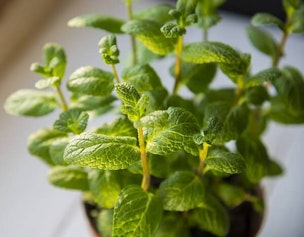
Ginger Mint
Often called “slender” or “scotch” mint, ginger plants have beautiful bright yellow stripes on their leaves. Ginger mint is not picky about the soil in grows in, and will do well even in heavy soils full of clay.
If you plant your ginger mint in a container, make sure to keep the soil amply moist and do not let it become dry to the touch.
Catmint
Catmint and catnip share several of the same characteristics, but catmint is more visually appealing and far less likely to encourage the neighborhood cats from lounging in your backyard.
Catmint is ideal as an insect deterrent, especially if you have challenges with aphids and Japanese beetles. It prefers sun or partial shade with well-draining soil. The plants are also heat and drought tolerant, which makes then an excellent addition for dry garden areas.
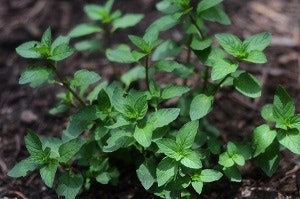
Chocolate Mint
Chocolate mint is a popular variety with endless culinary uses, so growing it in a container that can be carried between the outdoors and the kitchen is a popular option. While outside, the plant prefers full to partial sun and regular watering and fertilizer. In the mid to late summer, the plant has attractive pink blooms. It also has a delectable chocolate mint scent.
Orange Mint
Orange mint prefers rich, moist and clay-like soils that are a little acidic, which means it can grow in those places where other plants have a hard time holding on. It loves full sun, but will do well in partial shade as well.
Plant it along walkways and popular traffic areas so that the scent is released as the leaves are brushed. The pink and white blooms it grows are great for attracting butterflies.
The leaves can be used in salads, jellies, desserts, pesto, lemonades and cocktails.
Watermint
Watermint earns its name by its natural presence along the banks of streams and rivers. It acts as a natural form of erosion control and its fragrant blooms will attract butterflies and other pollinating insects during the summer.
If you have a pond in your landscaping, watermint is an ideal addition. The greenery will spread across the water, adding fragrance and color to the space. Experts suggest planting the roots directly at the edge, or even slightly into, the water so that moisture constantly flows around the roots.
Watermint has few pest or disease problems, and acts as a natural pesticide. Flies and even mice seem to avoid the scent of the plant.
Try Growing Mint for these Cocktail Recipes
This summer, why not follow up an afternoon in the garden with a little cocktail chemistry? These are our favorite mint-based recipes to help you use what you grow.

Mint Julep
- 3 oz Bourbon
- .5 oz Simple Syrup
- Mint
- Crushed Ice
Muddle six mint leaves with syrup in a chilled julep cup (or an Old Fashioned glass if you don’t have one). Pack glass with crushed ice and pour bourbon over the top. Stir briskly and add more ice until glass is chilled through. Garnish with mint leaves.

Mojito
- 2 oz White Rum
- .75 oz Simple Syrup
- .75 oz Lime Juice
- Club Soda
- Mint
In a shaker, muddle eight mint leaves and simple syrup. Add the rum and lime juice and shake with ice. Strain into a Collins glass, add crushed ice and top with club soda. Garnish with mint leaves.
Southside
- 2 oz Gin
- 1 oz Simple Syrup
- 1 oz Lime Juice
- 1 Mint Sprig
Muddle the mint sprig in a shaker. Add the remaining ingredients and shake with ice. Strain into a coupe glass. Garnish with mint leaf.

Whiskey Smash
- 2 oz Rye Whiskey
- .5 oz Simple Syrup
- .75 oz Lemon Juice
- Mint
Muddle the lemon juice, simple syrup and six mint leaves. Add whiskey and shake with minimal ice. Strain into a rocks glass over crushed ice and add more ice to fill glass. Garnish with a mint sprig.
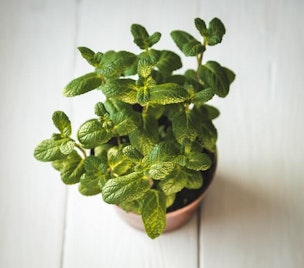
Let SummerWinds Help You With Growing Mint
Whether you’re starting a garden from scratch, expanding your current selection of plants or looking to add a new variety to your kitchen windowsill, let the garden experts at SummerWinds help you decide what to bring home next. They can make educated recommendations based on the growing conditions at your home, whether you plan to use it for cooking or beverages, and if there are other plants it will be competing with.

